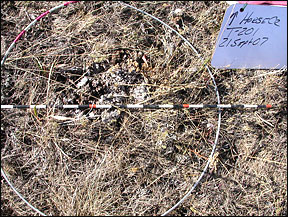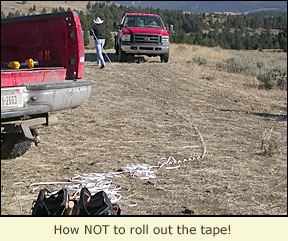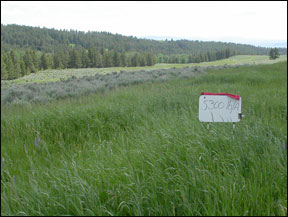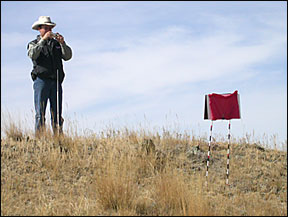ANNUAL MONITORING
Dear Land Stewards,It’s that time of year folks! Grass growth for the year is slowing down into dormancy – the perfect time to monitor…if you haven’t already.
You are receiving this email because you attended a Land EKG training, purchased EKG products, or have shown an interest in monitoring. This is the first of our new Land EKG E-Newsletter to be sent out quarterly. Let us know what you think of it!
 Why should I monitor annually?
Why should I monitor annually? The idea of Annual Monitoring is to maintain the monitoring site you have set up – remind yourself of where it is, make sure all markers are there, take annual photos, do production clippings, and record the management that occurs each year. This annual record helps with year-to-year management decisions and also with interpreting the outcome of the next full baseline EKG reading: which management strategies are working, which are not, and what is driving the changes that you are seeing? What are the photos saying each year? How is the site changing? Is forage production increasing? More or less bare ground? Annual monitoring gives you the whole story – very quickly!
What are the steps to Annual Monitoring?
 For Transects:
For Transects: 1) Re-locate site and find transect line markers: bucket lid/disk blade and white post, plastic stakes, fuzzies.
2) Replace/relocate any site markers
3) String out the transect tape, lay out hoops, fill out photo board information (site name, transect number, and date) and hang board on the sticks 10-12 ft from the bucket lid
4) Take photos – 6 total: one short line, one long line, hoop photos. If it is a 200ft line, you will have 4 hoop photos. If it is a 100ft line, you will have two hoop photos, plus 2 “step back” photos for each hoop.
5) Take forage production clippings, and clip grazing cage if you have one.
6) Check closest rain gauge and record general weather patterns.
7) Record grazing records for that pasture and any other management that took place over the year.
8) Record anything else that you think may be pertinent to the long-term health of that pasture: weeds, wildlife grazing, fire … etc.
 For Photo Points:
For Photo Points: 1) Re-locate site
2) Find bucket lid/disk blade with white post, replace either if necessary.
3) Fill out photo board with site name, number, date
4) Place photo board on sticks 10-12 ft away from bucket lid/disk blade.
5) Stand on bucket lid and take 6 photos (they should be the same as your originals)
Then complete steps 6 – 9 above.

How do I record and manage my data?
If you have taken a Land EKG 3-day range monitoring course, you have a blank annual form in the back of your handbook, which you can photocopy. For everyone else, if you need some blank forms, contact us at the office and we would be more than happy to send you some. Keep these filled-out forms and photos organized in a notebook. OR….
We have developed an on-line database for storing and organizing monitoring data and photos. It is a subscription-based service accessed through our website: www.landekg.com, with your own username and password. It analyzes data and prints out reports. We call it EKG DataStore. You can try it out by using our “fake profile” for Aster Ranch. Just go to the Land EKG DataStore and log in.
Username: randyaster
Password: raas
IN OUR NEXT LAND EKG E-NEWSLETTER ISSUE:
Grazing Planning 101
If you have any suggestions for future issues, have feedback, or want more information please contact us at:
(307) 366-2445 or contact us by email.
Thanks for reading. HAPPY MONITORING!
